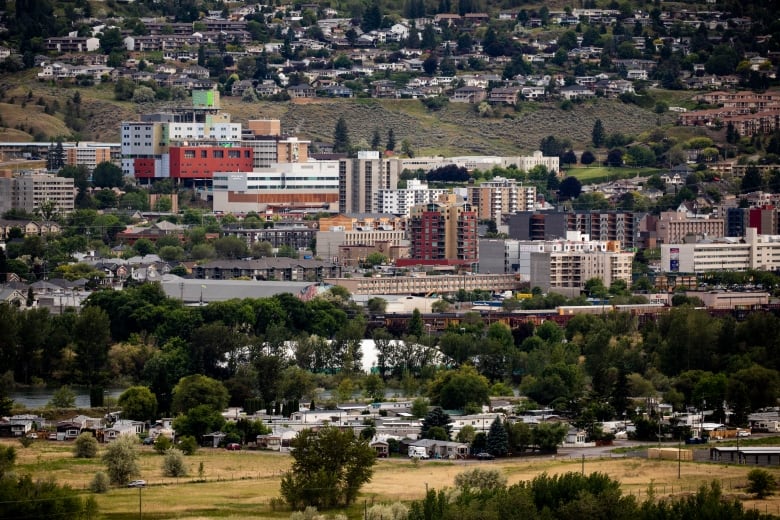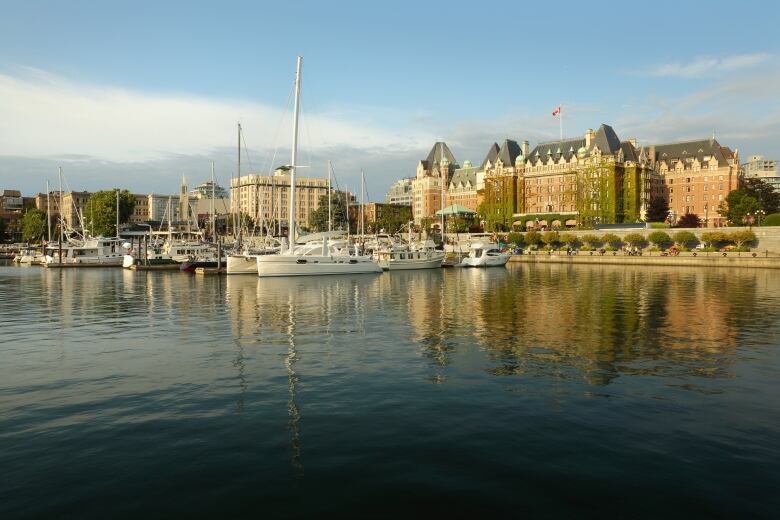The fastest growing population centres in Canada are in B.C. but they're not in Metro Vancouver
Population of areas centred on Kelowna, Chilliwack, Nanaimo and Kamloops has risen at least 10% since 2016

B.C.'s population has surpassed fivemillion people for the first time in its history,growing at a rate of 7.6 per cent between 2016 and 2021, the latest census data from Statistics Canada shows.
The province hasfour of Canada's five fastest-growing metropolitan areas all of which are outside the Metro Vancouver region.
The Kelowna, Chilliwack, Kamloops and Nanaimo census metropolitan areas all saw growth of 10 per cent or more in between 2016 and 2021.
The province's largest cities remain unchanged, with Vancouver in the top position followed by Surrey, Burnaby, Richmond and Abbotsford.
The information was released in Statistics Canada's first round of 2021 census data on population and dwelling counts, information that is used by political leaders and planners to shape decision-making around their communities.
B.C.'s growth leads major provinces
British Columbia led Canada's largest provinces in growth, its population increasing from 4,648,055 people in 2016 to 5,000,879 in 2021, a growth rate of 7.6 per cent. Only Yukon (12.1 per cent) and Prince Edward Island (eightper cent) grew faster, and only Ontario and Quebec had more people.
The Lower Mainland is still the most populous region in B.C., which has grown 7.7 per cent to more than three million, and contains B.C.'s five largest cities.
But the story of the census is the rapid rate of growth in B.C.'s Interior and on Vancouver Island.
The fastest growing census metropolitan area in Canada is Kelowna, which includes the municipalities of Kelowna, West Kelowna, Lake Country and Peachland. The region has grown 14 per cent since 2016 and now has atotal population of more than 222,000.
It is followed by the Chilliwack census metropolitan area, which recorded an increase of 12.1 per cent from 2016, and now has nearly 114,000 people.
The Nanaimo metropolitan census area on Vancouver Island including Nanaimo and surrounding communities such as Parksville and Qualicum Beach hadmore than 115,000 residents in 2021, a 10 per cent increase over the last census.
The population of the Kamloops metropolitan area also expanded by 10 per cent, to more than 114,000.

All four areas showed a boost in population growth compared to their rate of increase between 2011 and 2016, which was8.4 per cent in Kelowna, 8.1 per cent in Chilliwack, seven per cent in Nanaimo and five per cent in Kamloops.
London, Ont., completesthe list of the top five of fastest growing metropolitan areas in Canada.
The national census data showed Canada's population reached almost 37 million in 2021, an increase of 5.2 per cent over the 2016 figure.
Toronto remains the country's most populous municipality, with almost 2.8 million residents, while Vancouver remains the most populous in B.C., with just over 662,000.
Surrey edges closer to top spot
Surrey continues to gain on Vancouver in population and is on its way to becoming the most populous city in the province.
While Vancouver gained 30,762 people between 2016 and 2021, witha growth rate of fiveper cent, Surrey expanded at a rate of 9.7 per cent, adding more than 50,000 people. Vancouver now has 662,248 residents.Surrey has 568,332.
Aside from Surrey, the fastest growing municipalities in the Lower Mainland are Langley Township (13 per cent) and Abbotsford (8.6 per cent).
Elsewhere in B.C., the Salmon Arm and Vernon areas of the North Okanagan recorded a 10 per cent and 9.3 per cent jump respectively, while the Penticton area in the South Okanagan saw an 8.8 per cent jump.
The population of the Greater Victoria area grew by eight per cent, while the population of the Courtenay area further north on Vancouver Island increased by 9.2 per cent.

The population of the Thompson-Okanagan region as a whole has increased 10.7 per cent over the past five years, while the Vancouver Island and Sunshine Coast region recorded a population surge of 8.2 per cent.
The fastest growing municipality in the Thompson-Okanagan region is Sun Peaks Mountain, a small community about 58 kilometres northeastof Kamloops. Its population has jumped 128 per cent to more than 1,400.
Langfordinthe Greater Victoria area, and Tofino are the fastest growing municipalities on Vancouver Island, with respective growth rates at 32 per cent and 28 per cent.
Substantial growth rates are also seen in southwestern B.C., including in Pemberton (32.4 per cent), Harrison Hot Springs (29.8 per cent), Squamish (22.2 per cent), Whistler (19 per cent) and on Bowen Island (15.7 per cent).
Population in the Kootenays has grown 6.7 per cent. The municipality to experience the most growth was Radium Hot Springs, which experienced a 72.55 per cent population increase from 2016. Fernie (17.12 per cent),Invermere (15.51 per cent), Rossland (11.02 per cent) and Elkford (10 per cent) were the other municipalities showing the biggest increases in population.
Northern B.C. lagging behind
The northern B.C. region has seen the lowest population growth rate in the province, at 0.4 per cent.
Fort St. John, Prince George and Terrace are three of the cities in the area that have recorded population increases since 2016 six per cent, 3.7 per cent and 3.2 per cent, respectively.
The highest growth rate wasin Tumbler Ridge, a small community in northeastern B.C. a 20.7 per cent increase to nearly 2,400 residents.
Both Prince Rupert and Quesnel have seen a slight increasein their populations, of 0.7 per centand 0.1per cent respectively. Other smaller communities witnessed slumps, such as Fort Nelson in northeastern B.C. (down 18.3 per cent) and Fort St. James in northern central B.C. (down 13.3 per cent).
With files from Justin McElroy












_(720p).jpg)


 OFFICIAL HD MUSIC VIDEO.jpg)
.jpg)



























































































